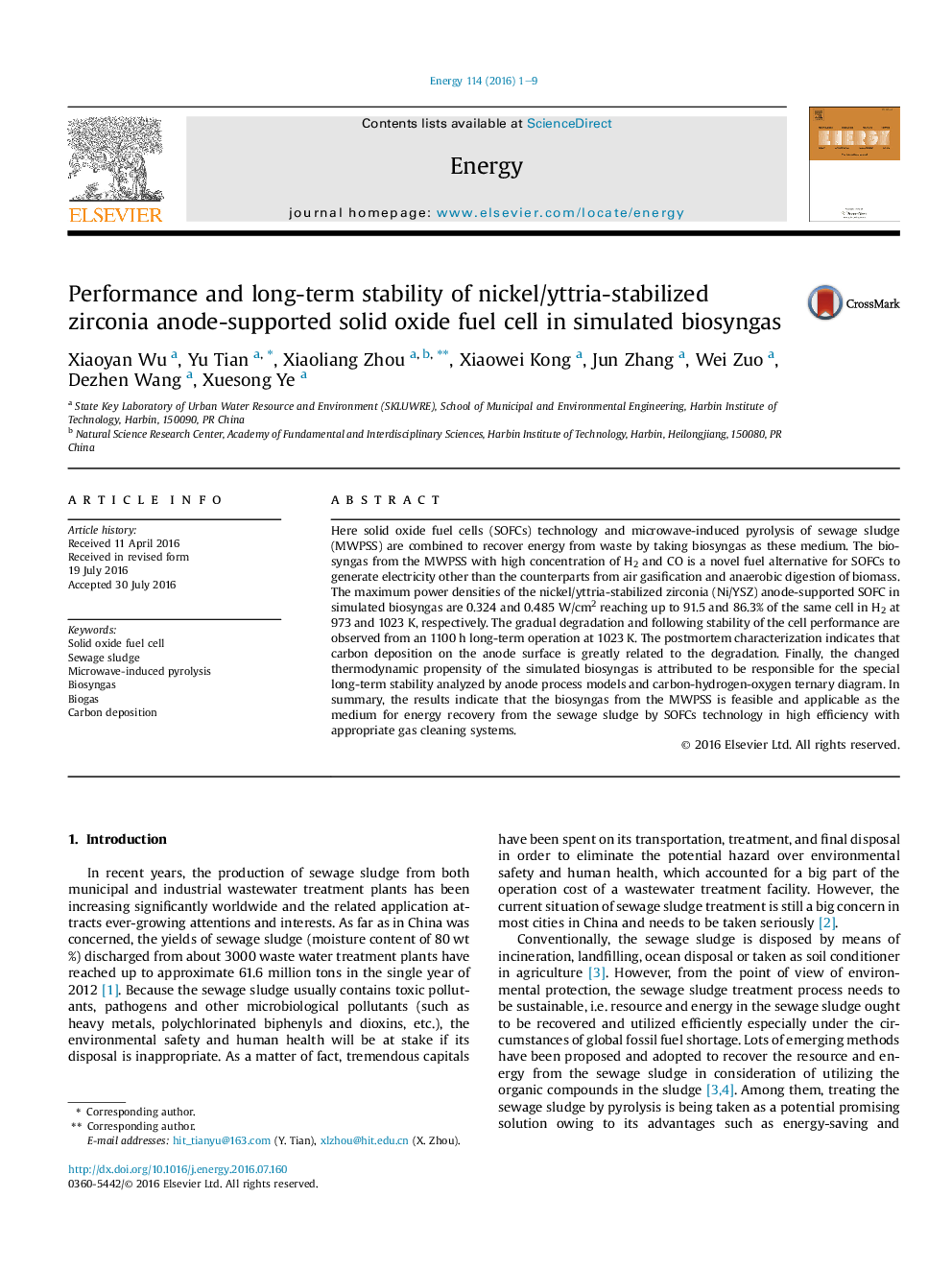| Article ID | Journal | Published Year | Pages | File Type |
|---|---|---|---|---|
| 8072824 | Energy | 2016 | 9 Pages |
Abstract
Here solid oxide fuel cells (SOFCs) technology and microwave-induced pyrolysis of sewage sludge (MWPSS) are combined to recover energy from waste by taking biosyngas as these medium. The biosyngas from the MWPSS with high concentration of H2 and CO is a novel fuel alternative for SOFCs to generate electricity other than the counterparts from air gasification and anaerobic digestion of biomass. The maximum power densities of the nickel/yttria-stabilized zirconia (Ni/YSZ) anode-supported SOFC in simulated biosyngas are 0.324 and 0.485Â W/cm2 reaching up to 91.5 and 86.3% of the same cell in H2 at 973 and 1023Â K, respectively. The gradual degradation and following stability of the cell performance are observed from an 1100Â h long-term operation at 1023Â K. The postmortem characterization indicates that carbon deposition on the anode surface is greatly related to the degradation. Finally, the changed thermodynamic propensity of the simulated biosyngas is attributed to be responsible for the special long-term stability analyzed by anode process models and carbon-hydrogen-oxygen ternary diagram. In summary, the results indicate that the biosyngas from the MWPSS is feasible and applicable as the medium for energy recovery from the sewage sludge by SOFCs technology in high efficiency with appropriate gas cleaning systems.
Keywords
Related Topics
Physical Sciences and Engineering
Energy
Energy (General)
Authors
Xiaoyan Wu, Yu Tian, Xiaoliang Zhou, Xiaowei Kong, Jun Zhang, Wei Zuo, Dezhen Wang, Xuesong Ye,
